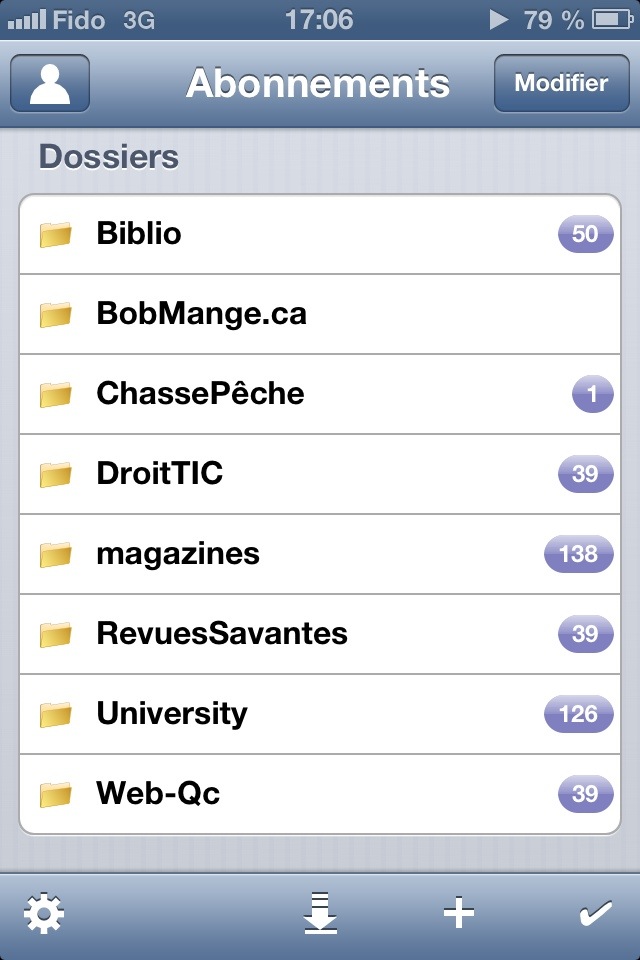Keeping current (With RSS Feeds)
I am giving a “brown bag” session today for the Management Department of the John Molson School of Business about “keeping current”.
Here is the outline of my talk:
– Some warming up exercises (because we have to talk about theories)
– General information about RSS Feeds
– Subscribing to RSS Feeds
– RSS Feeds and Scholarly sources (a journal’s table of contents, filtering and Google Alerts)
– A short video explaining the process of subscribing and reading RSS Feeds
Warming up exercises (theories are useful to organise one’s thoughts)
This initially made me think of Robert Darnton’s account of the Communication Circuit as well as Beaudry’s theories on relationships between authors and other agents in digital publishing (see images below). These models present how authors interact with others in scholarly communication.
Darnton, Robert. “What Is the History of Books?” Daedalus, Vol. 111, No. 3, Representations and Realities (Summer, 1982), pp. 65-83
See also an updated account:
Darnton, Robert “What is the history of books? Revisited” in Modern Intellectual History, 4,3(2007), pp. 495–508 2007, Cambridge University Press
doi:10.1017/S1479244307001370
Beaudry, Guylaine. La communication scientifique et le numérique, Paris : Hermès science publications / Lavoisier, 2011, p. 250
But enough with theories, let’s talk about keeping current with RSS Feeds !
The best tool I can offer to stay current are RSS Feeds (see this great Wikipedia article for a summary). Essentially, RSS is a technology which focuses on the structure of information and eliminates the formatting. Once this happens, you can simply obtain the address of the RSS feed and aggregate content with special software. So, instead of having to browse to multiple websites, you can configure a system to compile content for you.
Here is a video explaining what RSS Feers are:
[youtube http://www.youtube.com/watch?v=t28_PGSYZPU&w=480&h=360]
![]() To locate RSS Feeds on a website, one needs to locate the address of the various feeds available. These are either located in a special section of the website or readily available from a page you are browsing. Usually, the RSS feed link is next to a bright orange icon with white waves, as is illustrated here.
To locate RSS Feeds on a website, one needs to locate the address of the various feeds available. These are either located in a special section of the website or readily available from a page you are browsing. Usually, the RSS feed link is next to a bright orange icon with white waves, as is illustrated here.
A good place to start is by looking for RSS feeds from your favorite media outlets, such as the CBC, the BBC, Le Devoir or other sources. Some media sites also have featured blogs which one can subscribe to via RSS feeds.
Subscribing to RSS Feeds
In order to read these RSS feeds, one should use an RSS feed aggregator. This is a special kind of software which simply compiles all new content for you to read at your leasure. Think of it as an email software.
Personally, I use Google Reader to aggregate my RSS feeds. I also use FeeddlerPro to optimize my consumption of RSS feeds on my iPhone. This being said, there are hundreds of possibilities to aggregate and thousands to consume RSS feeds.
This is what happens when I go on vacation for a few days, my RSS content accumulates:
Subscribing to RSS Feeds from scholarly sources
Broadly speaking, there are two options to subscribe to RSS feeds of scholarly sources. You can
1. find the RSS feed address for the table of contents of your favorite journals by looking for the publisher’s website; or
2. set-up RSS feed alerts through article aggregator systems, such as, at Concordia University, ProQuest Business Databases or EBSCO’s Business Source Complete.
For the first option, subscribing to the full table of content means that you would be getting all articles as they are published in each issue. This may be cumbersome or yeild in too many items to read. That is why the second option is interesting: you can simply execute a search and obtain the RSS feed address by looking for that option from the Search History link on the search interface.
This short video demonstrates what I have explained in this post :
[youtube http://www.youtube.com/watch?v=wbDaRD6CjK0&w=640&h=360]
In closing, here is a list of my subscriptions I included on my other blog, Culturelibre.ca.
Ce contenu a été mis à jour le 2013-03-07 à 4:12 pm.


